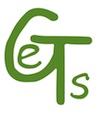|
The education system
in The Gambia is similar to the one in the UK.
Potential sponsors are often confused by the different information they are
given so here is our explanation.
There
are several types of school in Gambia.
Nursery –
usual age from 3/4 to 6/7
Lower
Basic - usual age from 6/7 to 12/13
Junior Secondary/ Upper Basic - usual age 12 to 15
Senior Secondary - usual age 15 to 18
Islamic school - all ages
The ages given
here are the planned age for schools, but in practice students may be older for
several reasons.
Lower Basic School
Gambian children start
at Lower Basic School around the age of 7. There are 6 years of primary
education, tuition during the first 5 can be FREE, depending on the school, but each child has
to buy a school uniform, school shoes, a bag, books and pencils. Some stay at
school at lunch time, but most go home for lunch. In the last year of primary
school (Grade 6) most schools charge a small fee to cover examinations. Children will attend
school for half a day only, either in the morning or the afternoon.
There are many
variations, but during primary schooling the main costs are clothing, and school
equipment. Some schools are sponsored by Gambian
businesses or by tourist organisations or charities and at these, there may be
FREE uniform or books. These differences make it hard for sponsors who will be
told different things about costs.
GETS provides a
detailed estimate for any child attending any school and keeps an individual
account for each sponsor with details of money spent and received.
Fees for Lower Basic students sponsored by GETS members
vary from D1,985 to D2,700 a year in a state school and from D4,675 to D8,080 in
a private school
All schooling, except
that in Islamic schools, is carried out in English. In primary classes the
children learn their numbers, how to count, learn the days of the week and the
months of the year. Much is done through rhymes and rhythms with the better
children in each grade leading the class. The quality depends on the resources
of the individual school, some will have desks and chairs while others will
have benches. Most have a board of some sort on the wall, some have nothing.
Some have toilets for the children, some just have holes in the ground. It
depends on the luck that the school has had with sponsorship and that often
depends on the enterprise of the head and their staff.
Towards the last years
of primary education most of the children can read and write. Most parents do
their best to send their children to all 6 years of Lower Basic School, but
because of costs some never go on to Junior Secondary/Upper Basic school.
|
Nursery School
Lessons are usually held in the mornings
only. These are all private schools so the fees vary greatly.
The fees of students sponsored by GETS
members vary from D3,500 to D30,000 a year.


School facilities vary greatly

 |
|
Junior
Secondary/Upper Basic School
At the age of about
13, Junior Secondary/Upper Basic education starts. Again the quality is not
uniform but most children will have a desk and chair and all are expected to
improve their English so that they can read and write.
The costs increase
each year, with the first term in each year being the most expensive because
there is a new uniform & new books to buy. Fees
for Upper Basic students sponsored by GETS members vary from D1,720 to D2,136 a
year in a state school and fees for a student at a private Upper Basic school
are D8,200 |

This
currency converter from
Access Gambia will
help you relate the costs to the currency you use |
|
Senior Secondary
School
From the age of 15/16,
families that can afford it send their children for the 3 final years of
schooling which ends with the pupils taking the school leaving examination.
Once again the fees
increase and again the first and last years are the most expensive because of
change of uniform and final examination fees.
Fees for Senior Secondary students
sponsored by GETS members are about D4,550 a year in a state school and the fees
for a student at a private Senior Secondary school vary from D4,800 to D16,000 a
year.
There is now the additional cost
of food at lunch time. This is most important as many children travel by bus
from their villages and have no way of getting home for lunch. When the average
family maybe has a total income of around £50 a month to pay for everything, it
is not surprising that children's education suffers, not only does it save the
considerable costs but as the child can then work, it provides the family with
more income.
|
Skills School
If children have not
passed the Grade 9 exam at the end of the Upper Basic School, or do not wish to
continue through to Grade 12 in the Senior Secondary School, they can go to a
Skills School to learn cookery, woodwork, tie-dye, sewing and other practical
subjects whilst continuing with basic English and maths. Again costs will vary
from school to school.
 |

